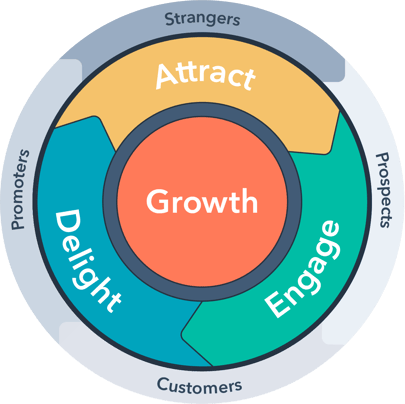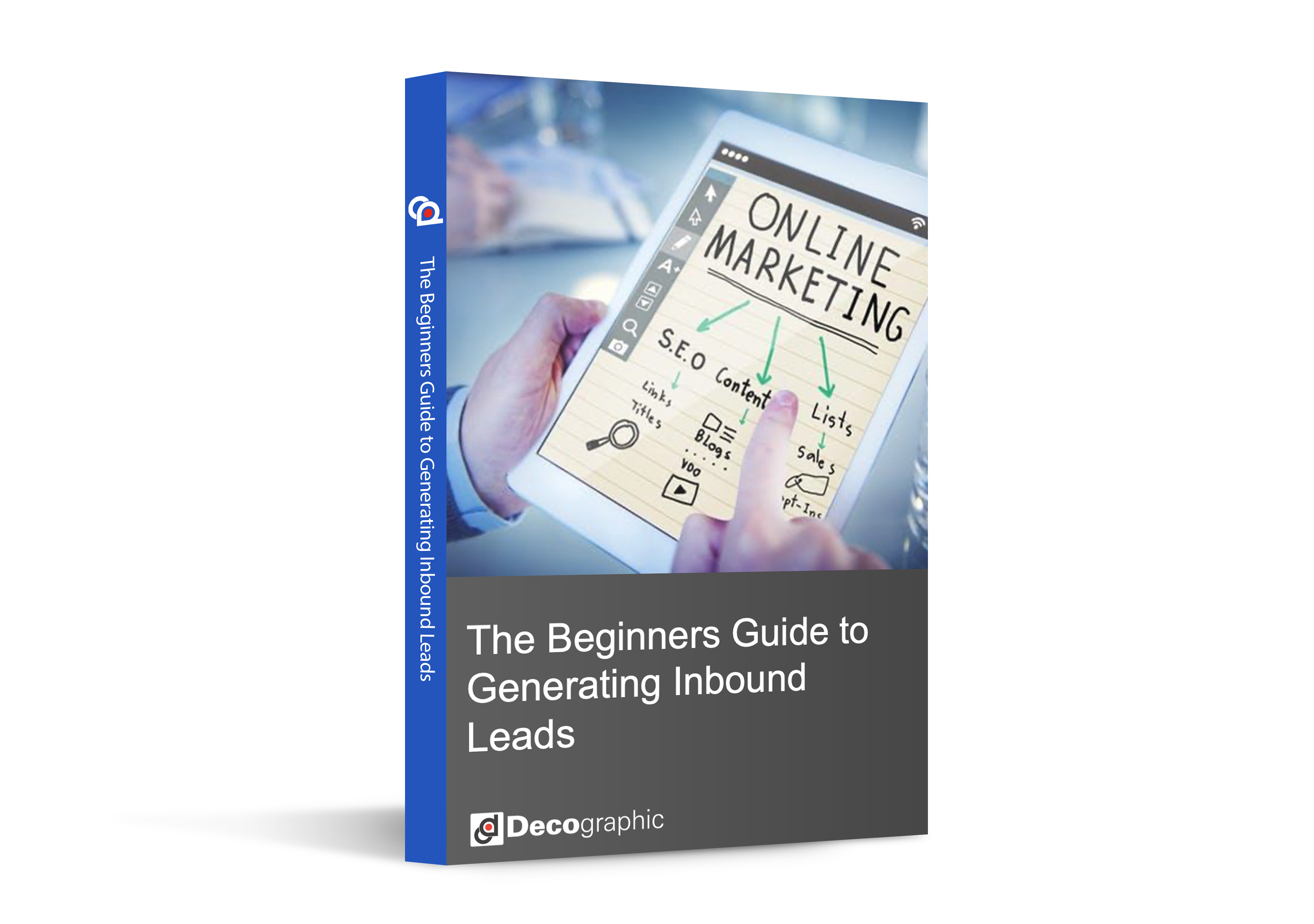What's the Difference Between Inbound and Outbound Lead Generation?
Inbound lead generation is the creation of content and campaigns that bring in website visitors and converts them into leads. It makes your brand more discoverable online, mostly on search engines and social media platforms. It also uses valuable content to engage visitors in an information exchange so that ongoing communication can be achieved.
What is inbound marketing?
Inbound marketing is a methodology that focuses on attracting customers to your product or service, rather than seeking them out. In other words, in inbound marketing, you let customers come to you, instead of going to them.

What are the benefits of inbound marketing?
There are many benefits to inbound marketing, but some of the most common ones include:
- It's more cost-effective than outbound marketing: Inbound marketing costs 62% less per lead than outbound marketing.
- It's more targeted: With inbound marketing, you're targeting people who are already interested in what you have to offer, rather than trying to reach everyone in the hopes that someone will be interested.
- It generates higher quality leads: Inbound leads are more likely to convert into customers than outbound leads.
- It builds trust and relationships: Inbound marketing is all about providing value and building relationships with potential and current customers. This helps to build trust and loyalty, which can lead to more sales in the long run.
What is outbound marketing?
Outbound marketing, on the other hand, is the more traditional approach to marketing in which businesses actively seek out customers through things like cold-calling and print advertising.
What are the benefits of Outbound Marketing?
Outbound marketing is the traditional form of marketing in which businesses reach out to customers through techniques such as advertising, cold-calling, and email blasts.
The goal of outbound marketing is to Interrupt customers with the hope that they will pay attention to your message. It's a numbers game- the more people you reach, the more likely you are to find someone interested in what you're selling.
Outbound marketing can be effective in generating leads, but it is very expensive and time-consuming. In addition, outbound techniques are often considered annoying or intrusive and can turn potential customers off from your product or service.
 Image courtesy of: https://www.clck.com.au/
Image courtesy of: https://www.clck.com.au/
So, which one is better? Inbound or outbound marketing?
The answer is: it depends. Both inbound and outbound marketing have their pros and cons, and the best approach for your business will depend on your specific goals and needs.
If you're looking to generate a lot of leads quickly, outbound marketing may be a good option. However, if you're more interested in building relationships and providing value to potential and current customers, inbound marketing may be a better fit.
No matter which approach you choose, the important thing is to create a comprehensive marketing strategy that includes both inbound and outbound techniques. By using a combination of both, you'll be able to reach the widest audience possible
Inbound Marketing Tools
Now that we've gone over what inbound marketing is and why it's so important, let's take a look at some of the best tools for inbound marketing.
HubSpot: HubSpot is one of the most popular inbound marketing platforms on the market. It offers a wide range of features and tools to help businesses with their inbound marketing efforts, including website design, SEO, social media, email marketing, and more.
Content Marketing Institute: The Content Marketing Institute is a great resource for all things content marketing. They offer articles, webinars, courses, and other resources on everything from developing a content strategy to creating great content.
Buffer: Buffer is a social media management tool that can be used for both inbound and outbound. It helps businesses schedule and publish content across multiple social media platforms, including Twitter, Facebook, LinkedIn, and more.
Hootsuite: Hootsuite is another social media management tool that can be used for inbound and outbound. It offers similar features to Buffer, such as the ability to schedule and publish content, as well as some additional features like social media analytics.
What industries can benefit from Inbound Marketing?
Inbound marketing can be beneficial for any industry or business, but there are some industries that it can be particularly helpful for.
Some examples of industries that can benefit from inbound marketing include:
- Technology
- B2B
- SaaS
- Startups
- Consulting
- Financial Services
- Real Estate
- Healthcare
If you're in one of these industries, or you're simply looking to generate more leads and sales, inbound marketing may be a good fit for your business.
Inbound Marketing Strategy
Now that we've gone over what it is and some of the benefits, you may be wondering how you can get started with inbound marketing for your business.
Here are a few tips:
1. Define your target audience: The first step is to define your target audience. Who are you trying to reach with your inbound marketing efforts? Once you know who your target audience is, you'll be able to create content and strategies that appeal to them.
2. Create buyer personas: these are semi-fictional representations of your ideal customer. They help you to understand your target audience on a deeper level and make it easier to create content that appeals to them.
3. Develop a content strategy: Once you know who your target audience is and what kind of content they're looking for, you can develop a content strategy. This will help you to create the right kind of content that will attract leads and convert them into customers. The most important thing to keep in mind is to create truly valuable content.
4. Implement SEO best practices: Search engine optimization is a key part of inbound marketing. By implementing SEO best practices, you can ensure that your website and content are easy to find by potential customers. (More details about SEO are below)
5. Promote your content: Once you have some great content, it's time to promote it! There are a number of ways to promote your content, including social media, email marketing, paid advertising, and more. Although this is considered outbound marketing, it is the perfect example of how both can be used to obtain better results.
6. Convert leads into customers: The final step in the inbound marketing process is converting leads into customers. This can be done through a variety of means, such as lead nurturing, lead conversion processes, and more.
By following these tips, you can get started with inbound marketing for your business and start generating more leads and sales.
More Details About Search Engine Optimization
Trying to boost your inbound marketing efforts? One of the best things you can do is focus on search engine optimization (SEO).
SEO is the process of optimizing your website and content for Google search with the goal of earning higher web traffic levels and improving your overall visibility.
There are a number of things you can do to improve your SEO, including:
1. Conduct keyword research: In order to optimize your website and content for Google, you need to know which keywords to target. This can be done through keyword research. There are a number of tools you can use for this, such as Google AdWords Keyword Planner, Moz Keyword Explorer, and more.
2. Optimize your website: Make sure your website is optimized for your target keywords. This includes things like ensuring your titles and meta descriptions are keyword-rich, using keyword-rich URLs, and more.
3. Create high-quality content: Google loves fresh, high-quality content. By creating blog posts, infographics, videos, and other types of content, you can improve your SEO and attract more leads. Just make sure that your content is truly valuable and relevant to your target audience.
The stages of the Inbound Marketing methodology
The inbound methodology is made up of four stages: attract, convert, close, and delight. These are key to understanding how to achieve a successful inbound marketing campaign.

- Attract: The first stage of inbound marketing is attract. In this stage, you're focused on getting more website visitors. This can be done through a variety of means, such as SEO, content marketing, social media, and more.
- Convert: Once you've attracted more website visitors, the next step is to convert them into leads. This can be done through lead generation forms, landing pages, and more.
- Close: The third stage of inbound marketing is close. In this stage, you're focused on converting leads into customers. This can be done through a variety of means, such as lead nurturing, lead conversion processes, and more.
- Delight: The final stage of inbound marketing is delight. In this stage, you're focused on providing an amazing experience for your customers so that they'll continue doing business with you and becoming promoters of your brand.
By following the inbound marketing methodology, you can attract more website visitors, convert them into leads, close them into customers, and delight them into promoters.
Who is inbound marketing NOT suited for?
Inbound marketing may not be the best option for businesses that are purely product-based or have a very limited target audience.
Conclusion
Inbound marketing is a great way to build relationships with potential and current customers and create long-term loyalty. It's important to remember, however, that inbound marketing is just one piece of the puzzle. Outbound marketing should also be included in your overall marketing strategy in order to reach the widest audience possible.
When it comes to choosing between inbound or outbound marketing, the best approach is to use a combination of both. This will ensure that you're able to reach your target audience in the most effective way possible.
What are your thoughts on inbound marketing? Have you used any of the tools listed above? Let us know in the comments below!





